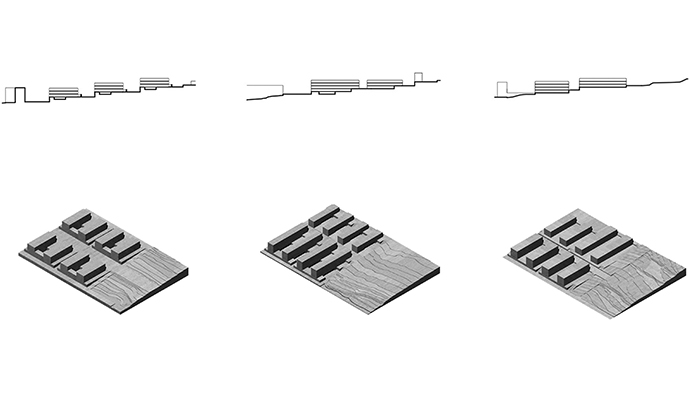Forms of the Earth and Urban Forms
DOI:
https://doi.org/10.19229/2464-9309/2102017Keywords:
urban design, physical geography, city and territoryAbstract
The relationship between the forms of Earth and the forms of the cities has ancient origins. Over the centuries, many settlements were born following the recognition of spatial vocations based inside the geographical forms, thus exalting the natural features of a specific territory. During the last century in Italy the Urban Design Theory dealt with these themes by trying to define the syntax of urban construction in relation to the forms of physical geography. In this sense, the projects for the Magliana quarters in Rome, by Saverio Muratori, and the project for Monteruscello, by Agostino Renna, can be considered as paradigmatic examples, because they represent an attempt to define settlements principles that correspond to the geomorphologic characters of the territory. The proposed paper intends to analyse these projects, in particular through the method of the critical drawing, identifying different scales of representation, each of which offers the possibility of investigating some specific structuring processes of urban form.
Downloads
Article Metrics Graph
References
Barbieri, G. (1996), “Configurazioni della città diffusa”, in Clementi, A., Dematteis, G. and Palermo, P.C. (eds), Le forme del territorio italiano – 1 – Temi e immagini del mutamento, Biblioteca di cultura moderna, Laterza, Roma-Bari, pp. 109-111.
Boeri, S. and Lanzani, A. (1992), “Gli orizzonti della città diffusa”, in Casabella, n. 588, pp. 44-59.
Camus, A. (1950/1954), Noces L’ete, it. trad. (2003/2013), in Pastura, C. (ed.), L’estate e altri saggi solari, Bompiani, Milano.
Gisotti, G. (2016), La fondazione delle città – Le scelte insediative da Uruk a New York, Carrocci Editore, Roma, pp. 366-370.
Lucci, R. (2016), “Agostino Renna e la Scuola di Napoli”, in Capozzi, R. et al. (eds), Agostino Renna – La forma della città, Clean Edizioni, Napoli.
Moccia, C. (2015), “Forme della Terra e principi insediativi”, in Moccia, C. (ed.), in Realismo e astrazione, Aión, Firenze, pp. 71-76.
Settis, S. (2017), Architettura e democrazia – Paesaggio, città, diritti civili, Einaudi, Torino.

Downloads
Published
How to Cite
Issue
Section
License
This Journal is published under Creative Commons Attribution Licence 4.0 (CC-BY).
License scheme | Legal code
This License allows anyone to:
Share: copy and redistribute the material in any medium or format.
Adapt: remix, transform, and build upon the material for any purpose, even commercially.
Under the following terms
Attribution: Users must give appropriate credit, provide a link to the license, and indicate if changes were made; users may do so in any reasonable manner, but not in any way that suggests the licensor endorses them or their use.
No additional restrictions: Users may not apply legal terms or technological measures that legally restrict others from doing anything the license permits.
Notices
Users do not have to comply with the license for elements of the material in the public domain or where your use is permitted by an applicable exception or limitation.
No warranties are given. The license may not give users all of the permissions necessary for their intended use. For example, other rights such as publicity, privacy, or moral rights may limit how you use the material.


















































































